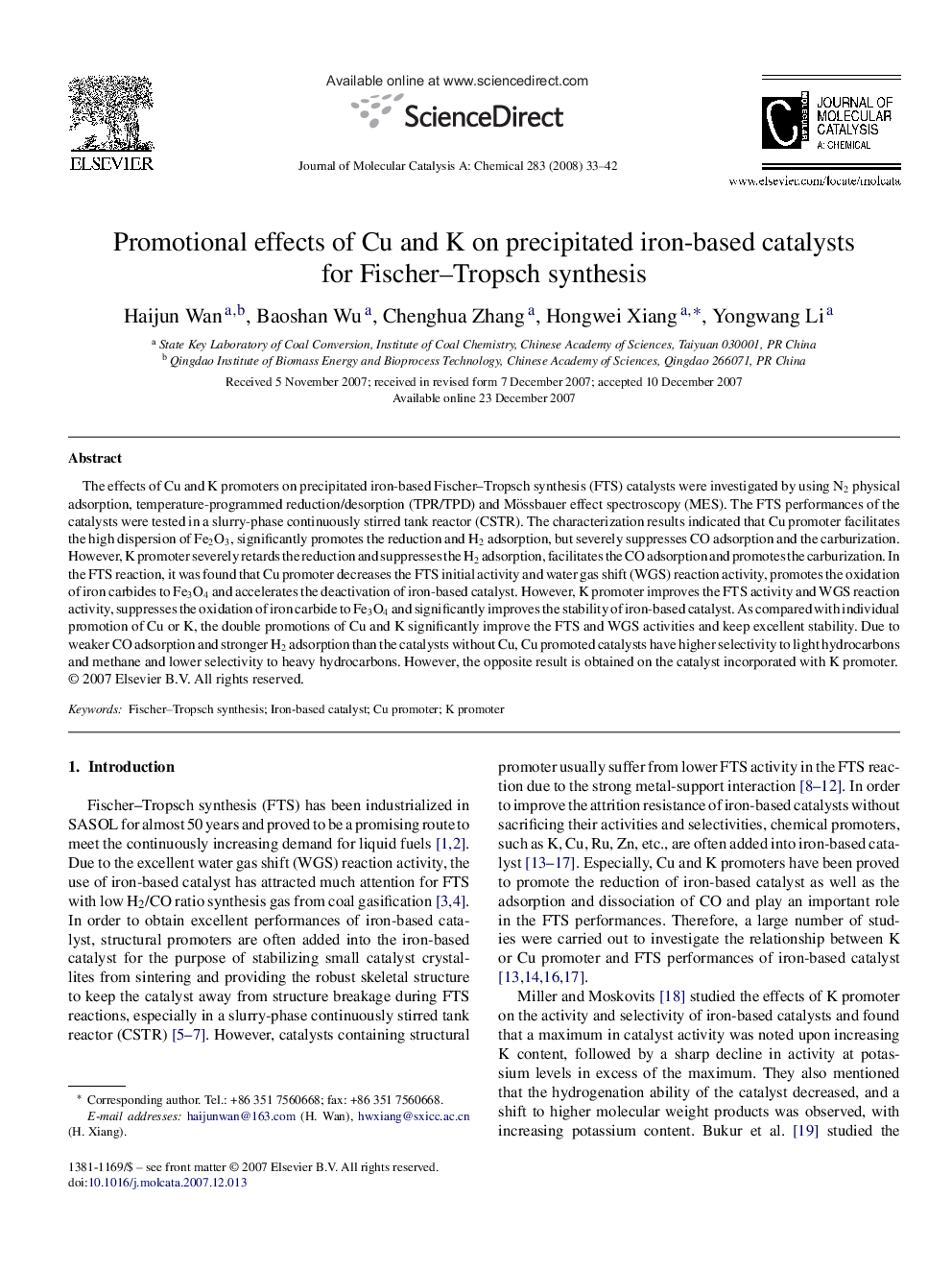| کد مقاله | کد نشریه | سال انتشار | مقاله انگلیسی | نسخه تمام متن |
|---|---|---|---|---|
| 68061 | 48502 | 2008 | 10 صفحه PDF | دانلود رایگان |

The effects of Cu and K promoters on precipitated iron-based Fischer–Tropsch synthesis (FTS) catalysts were investigated by using N2 physical adsorption, temperature-programmed reduction/desorption (TPR/TPD) and Mössbauer effect spectroscopy (MES). The FTS performances of the catalysts were tested in a slurry-phase continuously stirred tank reactor (CSTR). The characterization results indicated that Cu promoter facilitates the high dispersion of Fe2O3, significantly promotes the reduction and H2 adsorption, but severely suppresses CO adsorption and the carburization. However, K promoter severely retards the reduction and suppresses the H2 adsorption, facilitates the CO adsorption and promotes the carburization. In the FTS reaction, it was found that Cu promoter decreases the FTS initial activity and water gas shift (WGS) reaction activity, promotes the oxidation of iron carbides to Fe3O4 and accelerates the deactivation of iron-based catalyst. However, K promoter improves the FTS activity and WGS reaction activity, suppresses the oxidation of iron carbide to Fe3O4 and significantly improves the stability of iron-based catalyst. As compared with individual promotion of Cu or K, the double promotions of Cu and K significantly improve the FTS and WGS activities and keep excellent stability. Due to weaker CO adsorption and stronger H2 adsorption than the catalysts without Cu, Cu promoted catalysts have higher selectivity to light hydrocarbons and methane and lower selectivity to heavy hydrocarbons. However, the opposite result is obtained on the catalyst incorporated with K promoter.
The activity and stability of the catalysts. Reaction condition: 260 °C, 1.5 MPa, H2/CO = 0.67 and GHSV = 1000 h−1. The addition of Cu promoter into iron-based catalyst decreases the catalyst activity and accelerates the deactivation of iron-based catalyst. The addition of K and the co-promotional effects of Cu and K not only increase the catalyst activity, but also improve the catalyst stability.Figure optionsDownload as PowerPoint slide
Journal: Journal of Molecular Catalysis A: Chemical - Volume 283, Issues 1–2, 18 March 2008, Pages 33–42